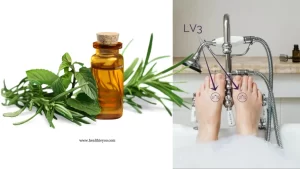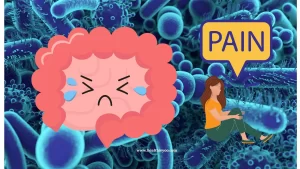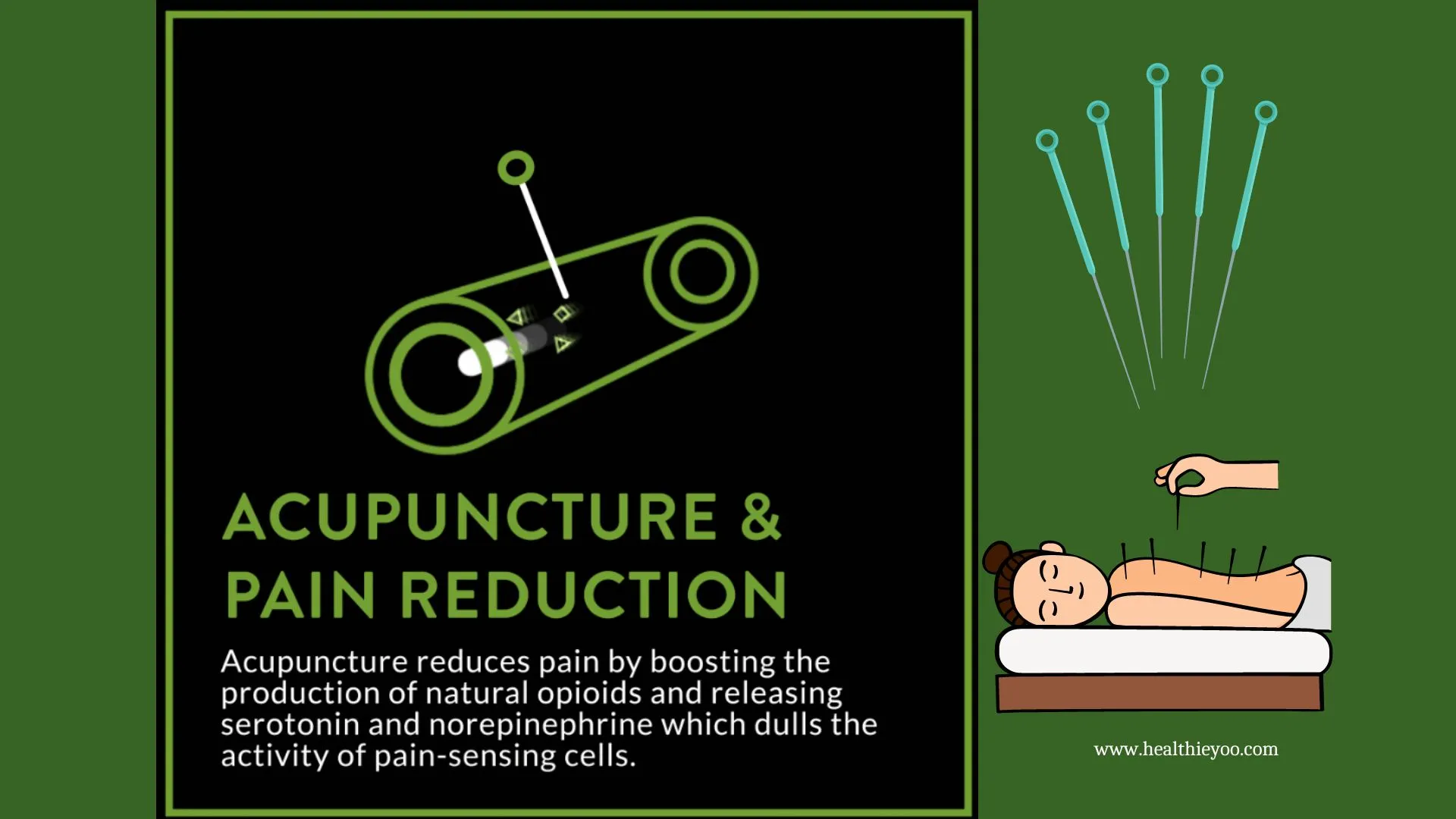Acupuncture – How it works to control your blood pressure, benefits the nervous system, elevates mood, and plays a role in reducing pain. Check out the gate control theory of pain to know how Acupuncture works to reduce pain sensations. Find Acupuncture near you today!
Even now, over 50 years after being introduced to the United States, acupuncture and the methodologies of Traditional & Complementary Medicine (TCM) are not well understood by the general public. Due to the lack of earnest and well-documented research on acupuncture until recently, many people are misguided in their understanding of the practice or believe it to be a sham! Despite this mistrust and confusion, acupuncture has only grown in popularity – which means that there must be something that brings people back to the table. Acupuncture keeps patients returning because of how effectively it treats symptoms throughout the entire body, while also strengthening and bringing balance to key systems.
Check out here to know how Acupuncture can work within the body and brings balance to the mind, benefit the nervous system, elevate mood, control blood pressure, and most importantly, reduces pain.
How Acupuncture Works Within The Body?
Research from the last two decades has brought acupuncture to the forefront of modern medicine. This new research has shown acupuncture to be effective against a variety of illnesses, injuries, and ailments, and even beneficial for healthy individuals who wish to take preventative measures. Acupuncture is unique in that it enhances the body’s intrinsic healing abilities by stimulating multiple systems simultaneously, encouraging proper function. In other words, it makes your blood flow easier, your muscles relax, and puts your mind at ease, relieving physical and mental tension. This combination allows your body to balance itself and recuperate from stress, injury, or illness with heightened effectiveness.
The cardiovascular system is positively impacted by acupuncture in many ways. As the needles are put in place, the release of vasodilating substances occurs, such as nitric oxide and acetylcholine (1) This causes blood vessels to relax, which improves circulation and regulates blood pressure. As system-wide vasodilation occurs, blood flow and the presence of natural analgesics increase throughout the body as well (2).
Considering this, it’s no surprise acupuncture is great for treating hypertension and combating issues with blood pressure. Acupuncture can even help with hypotension as well, as treatment balances the autonomic nervous system, regulating the activity between the sympathetic and parasympathetic nervous systems (also known as our fight-or-flight response) (1, 3).
How Acupuncture Brings Balance To The Mind?
Acupuncture benefits the nervous system by triggering the release of several key neurotransmitters. During treatment, the body is flooded with endorphins, serotonin, and norepinephrine. Now in greater quantities, these hormones and chemicals are quickly delivered throughout the body to provide pain relief, inflammation reduction, and mood regulation.
Acupuncture’s positive effects on the nervous system go beyond pain management and mood regulation. As mentioned, the treatment can also directly impact the balance of the nervous system, not only the autonomic but also the central and peripheral nervous systems. By targeting specific acupuncture points, the therapy can stimulate and regulate the activity of various nerve pathways, leading to a healthier nervous system.
One of the ways Acupuncture achieves this balance is by modulating the levels of various neurotransmitters that are critical for nerve communication. Acupuncture has been shown to increase the production of gamma-aminobutyric acid (GABA), which has a calming effect on the nervous system. Acupuncture also regulates the production of glutamate, a neurotransmitter that can influence anxiety and depression when unbalanced. This intricate modulation of neurotransmitter levels encourages all parts of the nervous system to remain in a balanced state, even post-treatment (4).
How Acupuncture Reduces Pain?
One of acupuncture’s most prominent and powerful applications is in managing and reducing pain. Acupuncture has the ability to influence the body’s natural pain regulation mechanisms, both physically and psychologically (5, 6).
Physically speaking, acupuncture reduces pain by boosting the production of natural opioids, which work in tandem with serotonin and norepinephrine that are released during treatment (5). Together, they dull the activity of pain-sensing cells known as nociceptors and the sensitivity of pain receptors in the spinal cord, while increasing the brain’s sensitivity to analgesics (5, 7). The increased blood flow and circulation which occurs during treatment swiftly delivers these beneficial neurotransmitters and chemicals, enhancing their effect. Additionally, acupuncture reduces inflammation by regulating the secretion of cytokines, a substance released by the immune system which triggers inflammation, further reducing physical pain and discomfort (5).
Acupuncture also aligns with the Gate Control Theory of Pain, which explains how acupuncture helps patients psychologically manage pain. This theory suggests that our spinal cord houses “gates” that can either block or allow pain signals to reach the brain, and that by opening or closing these gates, one can modify how one’s body perceives pain. These gates rely on a balance between painful and non-painful stimuli generally – however, during acupuncture, needles stimulate non-painful sensory nerve fibers, which “close” these pain gates, preventing pain signals from reaching the brain. This blocks pain signals from traveling through that specific channel to the thalamus, and then onto the prefrontal cortex, where the sensation is processed, registered, and cognitively evaluated – or experienced, in other words (8).
Acupuncture also triggers the release of endorphins and enkephalins, further “closing” pain gates and reducing pain perception. By “closing” these gates and altering the perception of pain for a specific area or part of the body, the nervous system is given a chance to self-regulate and return to a more natural baseline (9). This explains how pain is managed in patients that are struggling with chronic pain or injuries. Their body undergoes a change in which it better communicates with itself, reducing the intensity, frequency, and duration of pain sensations.
Sources
- Li, Q.-Q., Shi, G.-X., Xu, Q., Wang, J., Liu, C.-Z., & Wang, L.-P. (2013). Acupuncture effect and Central Autonomic Regulation. Evidence-based complementary and alternative medicine: eCAM. https://www.ncbi.nlm.nih.gov/pmc/articles/PMC3677642/
- X, S. (2017, June 29). Why does acupuncture work? study finds it elevates nitric oxide, leading to pain reduction. Medical Xpress – medical research advances and health news. https://medicalxpress.com/news/2017-06-acupuncture-elevates-nitric-oxide-pain.html
- Fan, H., Yang, J.-W., Wang, L.-Q., Huang, J., Lin, L.-L., Wang, Y., Zhang, N., & Liu, C.-Z. (2020, May 25). The hypotensive role of acupuncture in hypertension: Clinical study and mechanistic study. Frontiers in aging neuroscience. https://www.ncbi.nlm.nih.gov/pmc/articles/PMC7261879/
- Mawla, I., Ichesco, E., Zöllner, H. J., Edden, R. A. E., Chenevert, T., Buchtel, H., Bretz, M. D., Sloan, H., Kaplan, C. M., Harte, S. E., Mashour, G. A., Clauw, D. J., Napadow, V., & Harris, R. E. (2021, July). Greater Somatosensory afference with acupuncture increases primary somatosensory connectivity and alleviates fibromyalgia pain via insular γ-aminobutyric acid: A randomized neuroimaging trial. Arthritis & rheumatology (Hoboken, N.J.). https://www.ncbi.nlm.nih.gov/pmc/articles/PMC8197768/
- Zhang, R., Lao, L., Ren, K., & Berman, B. M. (2014, February). Mechanisms of acupuncture-electroacupuncture on persistent pain. Anesthesiology. Retrieved April 18, 2023, from https://www.ncbi.nlm.nih.gov/pmc/articles/PMC3947586/
- R M. (n.d.). Myofascial trigger points: Relation to acupuncture and mechanisms of pain. Archives of physical medicine and rehabilitation. Retrieved April 25, 2023, from https://pubmed.ncbi.nlm.nih.gov/6972204/
- Harris, R. E., Zubieta, J.-K., Scott, D. J., Napadow, V., Gracely, R. H., & Clauw, D. J. (2009). Traditional Chinese acupuncture and placebo (sham) acupuncture are differentiated by their effects on μ-opioid receptors (MORs). NeuroImage, 47(3), 1077–1085.
- Ong, W.-Y., Stohler, C. S., & Herr, D. R. (2019, February). Role of the prefrontal cortex in pain processing. Molecular neurobiology. Retrieved April 25, 2023, from https://www.ncbi.nlm.nih.gov/pmc/articles/PMC6400876/
Sprouse-Blum, A. S., Smith, G., Sugai, D., & Parsa, F. D. (2010, March). Understanding endorphins and their importance in pain management. Hawaii medical journal. Retrieved April 25, 2023, from https://www.ncbi.nlm.nih.gov/pmc/articles/PMC3104618/

Michael Zakko
Related Posts

Aroma Point Therapy: How combining essential oils and acupuncture pressure points helps ease menopause symptoms
What is Aroma Point Therapy? Internationally recognized menopause coach and medical qigong practitioner explain how combining essential oils for menopause with fragrance notes at 3

Gut Microbiome and Pain
Gut microbiome imbalances can cause dysbiosis and pain, including that of osteoarthritis. Support a healthy gut microbiome through diet! What is the role of the

An Integrative Strategy to Dealing with Chronic Pain and Illness: Holistic Healing Through Self-Compassion and Grace
In this article, Dr. Rita discusses the benefits of self-compassion and how self-compassion can help cope with chronic illnesses and pain. Chronic inflammation, over time,

Functional Medicine Pharmacist – Going Beyond The Pill
Who is a functional medicine pharmacist? What certifications are required for a functional medicine pharmacist? Here are the 5 foundational pillars of functional medicine and

Yoga & Hypertension – Anuloma Viloma Pranayama Yoga to Lower Blood Pressure
Yoga for Hypertension? Here is the evidence on Yoga particularly Anuloma Viloma Pranayama yoga to lower blood pressure. Below are the tips on managing hypertension

Can glucose cause you pain?
Can glucose cause you pain? Is pain a consequence of diabetes! – Have you ever wondered why? Get to know why people with diabetes experience

